I'm using SVGZ images on HTML pages for their resizability. These SVGZ images contain PNGs that have been enlarged in specific ways that I want to preserve, pixelation and all. Firefox is displaying this correctly (the way I designed it in Inkscape):
while Chrome is "helpfully" autosmoothing everything:
I'm teaching a course, and I'm trying to show how image data is being created over successive passes. I want the pixelation, because that's what the data is. In fact, the PNGs inside the SVGZ contain the property style="image-rendering:optimizeSpeed". I was hoping that Chrome would recognize that and respect it.
(Please note that I've already tried the CSS image-rendering: pixelated; trick. I'm sure that would work perfectly well if I were showing PNGs directly, but that's not what I'm doing.)

